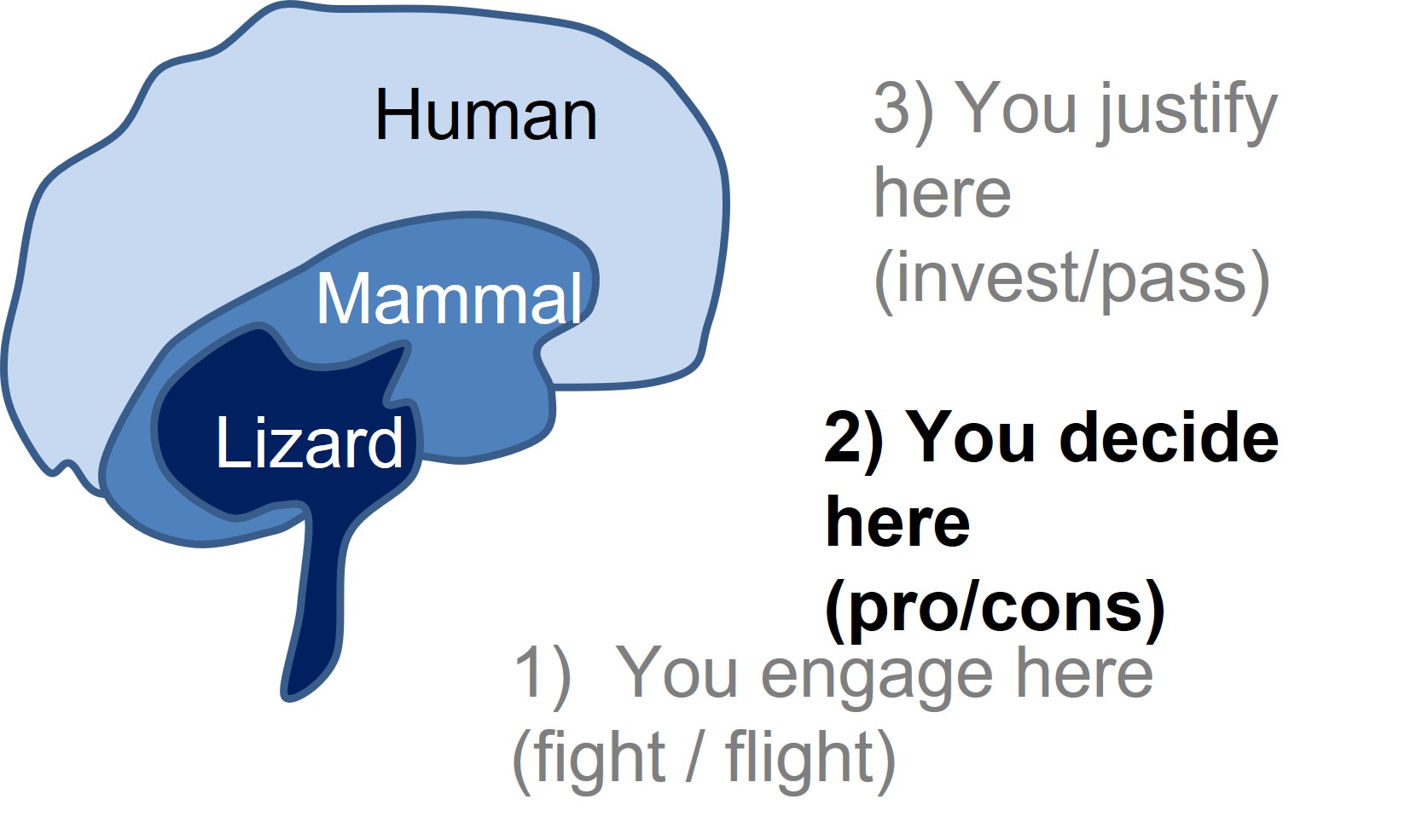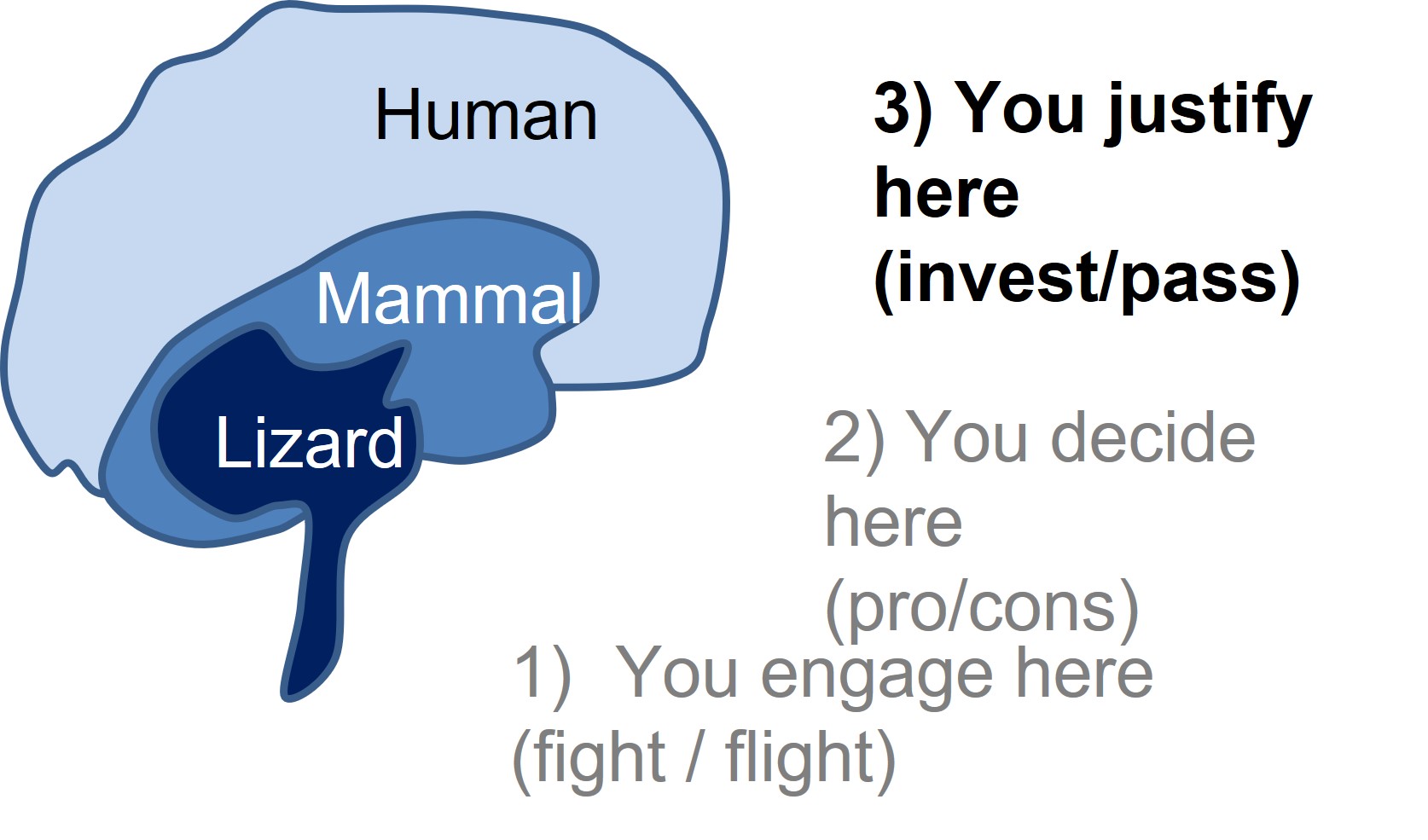The 5 silent questions
buyers make to sellers


You reached Flavio's blog
on Business Exploration.
I am always happy to talk
with interesting people.
Buyers have a go-no-go filter on, when a seller approaches them.
This filter is made of 5 questions and as sellers we must be ready with an answer.
They are engrained in our DNA and lets only "value" to pass through:
We decide thanks to our nervous systems, that has evolved from reptilian, to mammal to human.
Each stage added a layer of complexity to the problem solving ability,
to tackle the essential goal of survival.
at ground level, first

The first priority for the Lizard-in-you is to survive.
It has to decide in a fraction of second wheter to flight or fight.
Engage, and accept the risk of being eaten, or escape faster than light.
Are you moving?
For this reason the Lizard brain is constantly looking for changes in the sorrounding scenario.
Its curiosity is alerted by any change in the status quo: a new scream in the jungle,
a shining tooth that shouldn't be there.
Are you safe?
Once the Lizard spotted something moving,
its priority becomes to understand if the "change" is safe.
In the case of another human: if he/she is trustable: if has
To engage with the buyer, seller has to:

Mammals survived dinosauros extinction leveraging their social bonds.
The first goal of the Mammal brain's buyer is to protect and strenght those bonds.
The seller becomes of interest only if can answer positively to the question:
Are you helping me?
…reinforce my social bonds.
Buyers depend on their network to fullfill their needs.
Seller can help the buyer achieve full life potential
impacting on the bonds of the network:
how the buyer can use, leverage, reinforce those bonds
to satisfy the buyer need of safety, appreciation, appeal, success.
A gap in the level of satisfaction of these basic needs
causes an emotional stress. The stronger the gap, the stronger the emotion.
This is why Mammals decide on emotions:
decide on the seller ability to help exploit their bonds.
Ther is nothing rational here, apart the ability of the seller
to link the offer to a possible improvement of the emotional gap.
This is way storytelling is the best way to convey the message:
it makes resonante the buyers bonds, with your personal "pathos"
| Need for: | Impact on: | Emotional driver: |
| Safety | My existence | Stay safe |
| Relationship | My (safety) network | Increase my bonds |
| Appreciation | My social status | Reinforce my bonds |
| Appeal | My attractive skills | Be the preferred bond |
| Health | My healthy capability | Use my bonds |
| Adventure | My learning by playing | Improve my bonds |
| Success | My legacy | Exploit my bonds |
| Freedom | My freedom of choice | Chose my bonds |

Once the Mammal brain has decided by gut feeling that there is value
in dealing with the seller, the Human brain kicks in to justify the decision taken.
The Human brain is capable to project the solution in the future
and estimate the valure of the returns, responding to the question:
Are you worth?
Are you worth at least 2 times the time I lose investing on you?
Is your solution worth at least 2 times the investment it costs?
(Our loss adversion makes us value what we have at least 2 times what we could gain)
Finally the Human brain is capable to insert the solution offered into the context
making sure that it computes - it make sense, it fits and does not contraddict it.
It's a real facts-checking to answer the question:
Do you compute?
Are you capable to pass all the objections?
And because the justifications shall be brought to the mammal brain,
our Logos - our logic - will be better transferred again via storytelling.
| Objection: | it's real meaning |
| No understand | What you say |
| No Need | Already solved |
| No value | Already fine |
| Can't believe | You can make it |
| Can't support | Staff and resources |
| Can't afford | spend the cash |
(Adapted from Shari Levitin)
